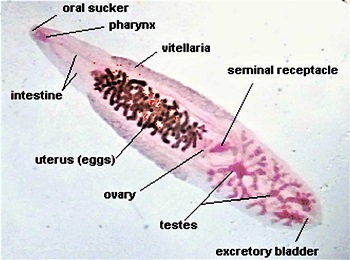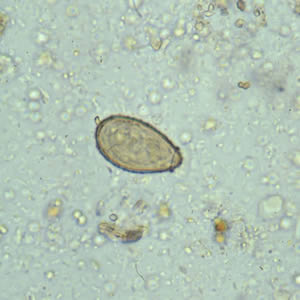Clonorchis sinensis - Classification, Habitat, Morphology, Epidemiology, Transmission
Introduction of Clonorchis sinensis
Clonorchis sinensis, commonly known as liver fluke or the Chinese liver fluke, infects the common bile duct and gall bladder of fish-eating mammals such as humans. These parasites, which are the causative agent of clonorchiasis, feed on bile and are one of the most important liver fluke infecting humans.
Classification of Clonorchis sinensis
Kingdom: Animalia
Phylum: Platyhelminthes
Class: Trematoda
Order: Plagiorchiida
Family: Opisthorchiidae
Genus: Clonorchis
Species: C. sinensis
History of Clonorchis sinensis
The Clonorchis sinensis was first discovered by British physician James McConnell in 1874 at the Medical College Hospital in Calcutta, India. The parasite was found in the bile duct of a Chinese carpenter.
In 1927, the life cycle of the liver fluke was discovered by Faust and Know.
Habitat of Clonorchis sinensis
The adult worm of Clonorchis sinensis habitats the distal biliary passages and pancreatic ducts of man, domestic animals as well as wild animals.
Morphology of Clonorchis sinensis
The important morphological stages of Clonorchis sinensis include the adult, eggs, and metacercaria.

Image: Clonorchis sinensis adult morphology (Source: Health Jade)
Adult worm
the adult worm of Clonorchis sinensis is oblong, flat, and transparent with a rounded posterior end and pointed anterior end
small in size measuring 10mm to 25mm in length and 3mm to 5mm in width
oral sucker slightly larger than the ventral sucker
ventral sucker located in the posterior part of the anterior third
the posterior third of the body contains two large testes which are deeply lobulated and branched
the uterus which is located anteriorly is the identifying feature of Clonorchis sinensis
the lifespan of the fluke is between 20 years to 30 years

Image: Clonorchis sinensis egg (Source: CDC)
Eggs
Clonorchis sinensis eggs are small, flask-shaped with an operculum at the small anterior part
bile-stained i.e. yellowish brown
measures 28μm to 35μm x 12μm to 18μm
the posterior end has a small knob that gives an appearance of an electric bulb
the eggs are fully embryonated when laid and contain a ciliated embryo called miracidium
are passed along with the host feces
infectious only to snails but not humans or other mammals
Infective form
Metacercaria
the infective form of Clonorchis sinensis
found encysted in the flesh of fresh-water fish
Epidemiology of Clonorchis sinensis
Epidemiological studies of Clonorchis sinensis have confirmed the endemic regions to be in Japan, China, Vietnam, Taiwan, South Korea, and Hong Kong.
Reservoir, Source of Clonorchis sinensis
The source of Clonorchis sinensis infection is raw freshwater fish infected with metacercaria.
An important reservoir of Clonorchis sinensis is humans and dogs. Feces from infected individuals contaminate freshwater sources.
Transmission of Clonorchis sinensis
Transmission of Clonorchis sinensis takes place by the following sources:
consumption of raw, partially cooked, dried, salted, pickled fish infected with the fluke